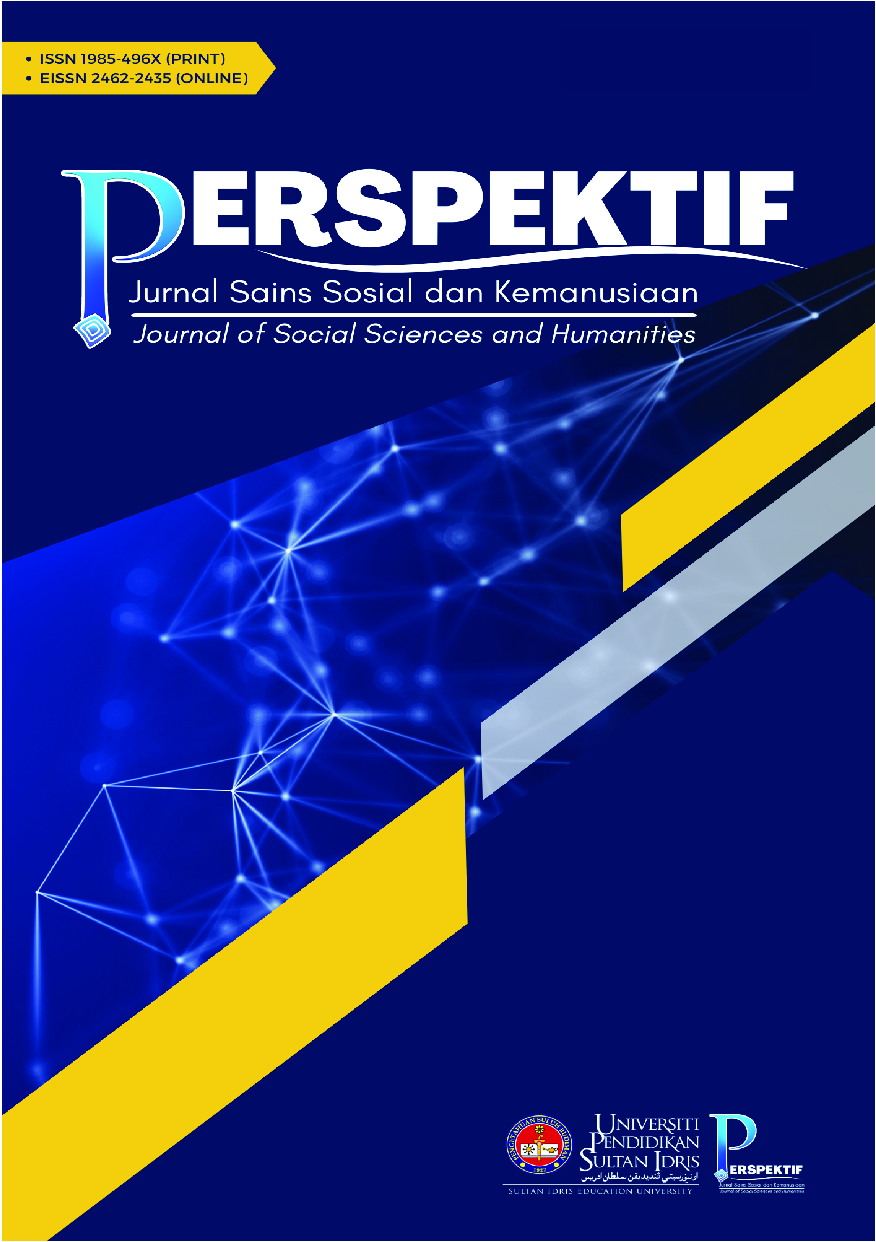A Quest for Virtual Learning Merits and Demerits During the Covid-19 Pandemic
DOI:
https://doi.org/10.37134/perspektif.vol16.1.8.2024Keywords:
virtual learning, students, merits, demerits, pandemicAbstract
The study discusses the merits and demerits of virtual learning among Malaysian secondary school students in the first term of the Covid 19 pandemic. This quantitative research was conducted through a semi-structured online survey using a random sample technique of 100 respondents. It revealed that the respondents of this study preferred face to face learning over virtual learning. Multiple obstacles and hiccups including technical and internet issues, sharing of device, limited data, time management, among others, geared to this affirmation. Virtual learning during the first term of the pandemic offered more demerits than merits as the disadvantages overshadowed the benefits of online learning experienced by these secondary school students. The finding implies that understanding the demerits of virtual learning can assist in reducing the issues raised as well as providing effective solutions in future. This study proposes that education stakeholders to be extra vigilant and proactive during adversity so that students are committed to their continued success even in the virtual learning world.
A QUEST FOR VIRTUAL LEARNING MERITS AND DEMERITS
DURING THE C-19 PANDEMIC
Manfaat Dan Kepincangan Pembelajaran Maya
Semasa Pandemik C-19
Dr.C
Abstract
The study discusses the merits and demerits of virtual learning among Malaysian secondary school students in the first term of the Covid 19 pandemic. The study was a quantitative research conducted through a semi-structured online survey using a random sample technique of 100 respondents. It revealed that the respondents of this study preferred face to face learning over virtual or virtual learning. Multiple obstacles and hiccups including technical and internet issues, sharing of device, limited data, time management, among others, geared to this affirmation. Virtual learning during the first term of the pandemic offered more demerits than merits as the disadvantages overshadowed the benefits of online learning experienced by these secondary school students. The finding implies that understanding the demerits of virtual learning can assist in reducing the issues raised as well as providing effective solutions in future. This study proposes that all relevant stakeholders in the education system to be vigilant and proactive so that students can stay engaged in the virtual world of virtual learning and none will be left out during any trying times.
Downloads
References
Al-Kumaim, N.H., Alhazmi, A.K., Mohammed, F., Gazem, N.A, Shabbir, M.S. & Fazea, Y. (2021). Exploring the Impact of the COVID-19 Pandemic on University Students’ Learning Life: An Integrated Conceptual Motivational Model for Sustainable and Healthy Online Learning. Sustainability, 13(5), 2546. https://doi.org/10.3390/su13052546
Almahasees, Z., Mohsen, K. & Amin, M.O. (2021). Faculty’s and Students’ Perceptions of Online Learning during COVID-19. Frontier in Education, 6, 638470. https://doi.org/10.3389/feduc.2021.638470
Alawamleh, M., Al-Twait, M.L. & Al-Saht, G.R. (2020). The effect of online learning on communication between instructors and students during Covid-19 pandemic. Asian Education and Development Studies, 11(2), 380-400. https://doi.org/10.1108/AEDS-06-2020-0131
Annamalai, N. (2021). Online Learning during COVID-19 Pandemic. Are Malaysian High School Students Ready? Pertanika Journal Social Sciences and Humanities, 29(3), 1571-1590. https://doi.org/10.47836/pjssh.29.3.06
Annamalai, N., & Kumar, J. A. (2020). Understanding smartphone use behavior among distance education students in completing their coursework in English: A Mixed-Method Approach. The Reference Librarian, 6(3-4), 199- 215. https://doi.org/10.1080/02763877.2020.1815630
Annamalai, N., Eng, T. K., Abdullah, A., & Sivagurunathan, S. (2015). Exploring the Interactions on an online narrative writing platform. Malaysian Journal of Learning and Instruction, 12, 103-129. https://doi.org/10.32890/mjli2015.12.6
Carter, D.C. (2010). Quantitative psychological research: The complete student’s companion. NY. Psychology Press.
Creswell, J.W. (2009). Research Design: Qualitative, Quantitative, and Mixed Methods Approaches. 3rd Edition. Los Angeles: Sage Publications, Inc.
Das, Espinoza, M.C., Che Ming, Teoh, K.B, Lee. G.S., Jagdale, A., Nair, R.K. , Yashaswini, Singh, P. & Malik, A.(2021). Effectiveness and Efficiency of virtual learning among Students of Higher Education during the COVID-19 Pandemic: A Comparative Study of Malaysia and India. International Journal of Tourism & Hospitality in Asia Pasific, 4(3), 89-101. https://doi.org/10.32535/ijthap.v4i3.1207
Dhawan, S. (2020). Online Learning: A Panacea in the Time of COVID-19 Crisis. Journal of Educational Technology Systems, 49(1), 5–22. https://doi.org/10.1177/0047239520934018
Dewey, J. (1938). Experience and education. Collier Books.
Garrison, D. R., Anderson, T., & Archer, W. (2000). Critical thinking, cognitive presence, and computer conferencing in distance education. American Journal of Distance Education, 15(1), 7-23. https://doi.org/10.1080/08923640109527071
Kamal, A.A., Shaipullah,N.M., Truna, L., Sabri, M. & Junaini, S.N. (2020). Transitioning to Online Learning during COVID-19 Pandemic: Case Study of a Pre-University Centre in Malaysia. International Journal of Advanced Computer Science and Applications, 11(6), 217-223. https://doi.org/ 10.14569/IJACSA.2020.0110628
Khan, M.A., Kamal, T., Illiyan, A. & Asif,M. (2021). School Students’ Perception and Challenges towards Online Classes during COVID-19 Pandemic in India: An Econometric Analysis. Sustainability, 13(9), 4786. https://doi.org/10.3390/su13094786
Khan, M.N., Ashraf, M.A., Seinen, D., Khan, K.U. & Laar, R.A. (2021). Social Media for Knowledge Acquisition and Dissemination: The Impact of the COVID-19 Pandemic on Collaborative Learning Driven Social Media Adoption. Frontiers in Psychology, 12, 648253. https://doi.org/10.3389/fpsyg.2021.648253
Kuhfeld, M. and B. Tarasawa (2020). The COVID-19 Slide: What summer learning loss can tell us about the potential impact of school closures on student academic achievement? NWEA. https://eric.ed.gov/?id=ed609141
Muftah, M. (2022). Impact of social media on learning English language during the COVID-19 pandemic. PSU Research Review. https://www.emerald.com/insight/content/doi/10.1108/PRR-10-2021-0060/full/html
New Straits Times, February 2, 2021. Take Advantage of Free Internet Data for Pdpr Purposes- MCMC. Bernama https://www.nst.com.my/news/nation/2021/02/662364/take-advantage-free-internet-data-pdpr-purposes-mcmc
Pike, K. (2011). Morphological Awareness Dynamic Assessment Task in Third Grade Children:A Feasibility Study. Undergraduate Honors Capstone Projects, 90. https://doi.org/10.26076/6516-17ef
Shahrina, I., Mohammad, I.H, Mohammad, N. & Sharifah, F. S. M. (2021). The Impact of Covid-19 on Online Teaching and Learning (TnL) Towards Teachers in Malaysia. Malaysian Journal of Science, Health & Technology, 7(2), 15-22. https://doi.org/10.33102/mjosht.v7i2.169
Downloads
Published
Issue
Section
License
Copyright (c) 2024 Chandrakala Varatharajoo, Sheiladevi Sukumaran, Manivannan Subramaniam

This work is licensed under a Creative Commons Attribution-NonCommercial-ShareAlike 4.0 International License.



